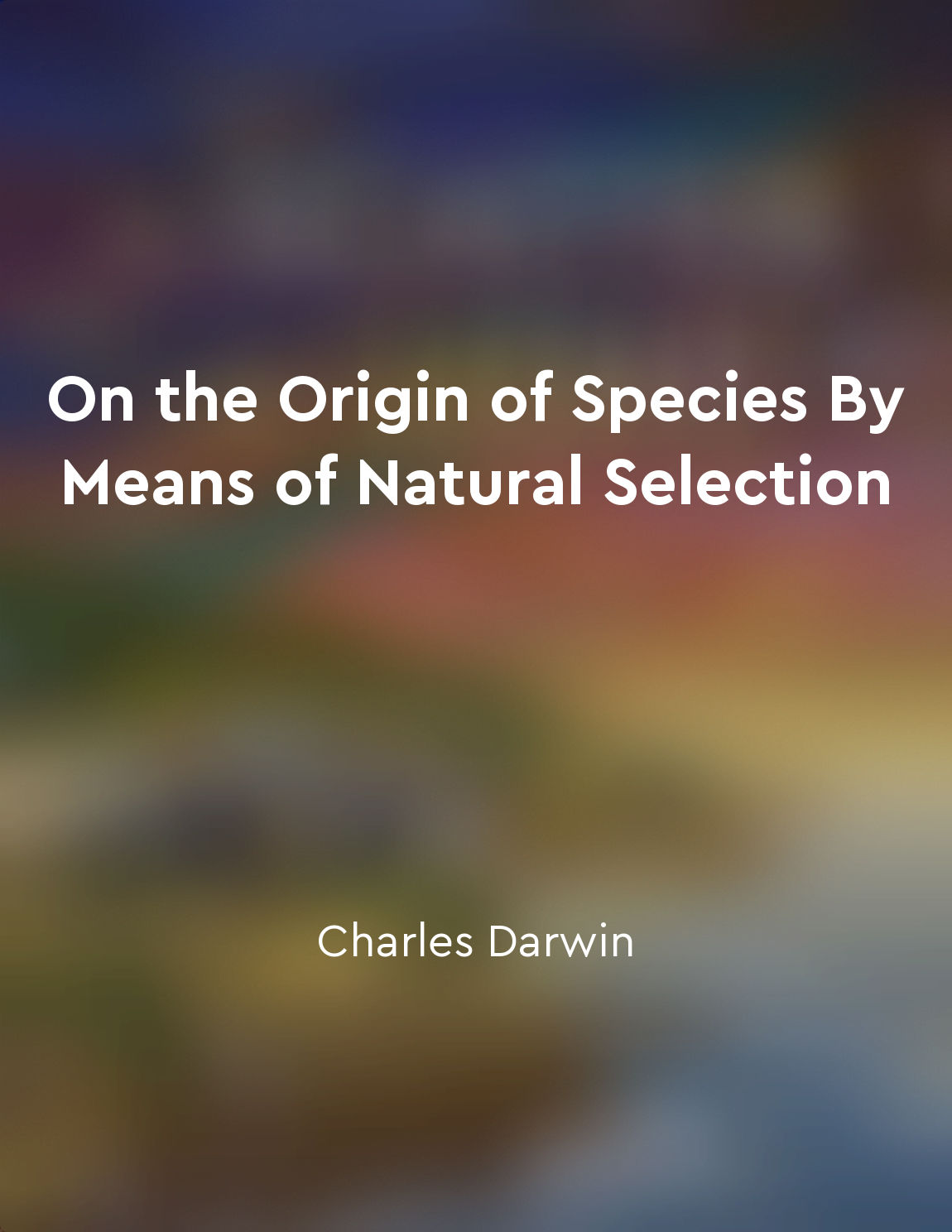Convergent evolution results in similar adaptations across different species from "summary" of The Greatest Show on Earth by Richard Dawkins
Convergent evolution is a fascinating concept that highlights the extraordinary power of natural selection. It refers to the phenomenon where different species independently evolve similar traits or adaptations in response to similar environmental pressures. Despite not sharing a common ancestor that possessed these traits, these species end up with strikingly similar features due to the forces of natural selection. One classic example of convergent evolution is the development of wings in birds and bats. Birds, with their feathers, and bats, with their skin stretched between elongated fingers, both evolved the ability to fly. While their wings may look quite different at first glance, they serve the same purpose of allowing these animals to take to the skies and navigate their environments with ease. Another intriguing example is the evolution of camera-like eyes in both vertebrates like humans and cephalopods like octopuses. Despite the vast differences in their evolutionary histories, these two groups of animals developed remarkably similar eyes with lenses, retinas, and photoreceptor cells that enable them to see and interpret their surroundings effectively. The instances of convergent evolution are not limited to these examples but can be found across the tree of life. From the streamlined bodies of dolphins and sharks to the spiny projections of cacti and euphorbias, nature is full of instances where different species have converged on similar solutions to the challenges they face in their environments. This concept underscores the power of natural selection in driving the evolution of life on Earth. It demonstrates that when faced with similar selection pressures, different species can independently arrive at similar adaptations, showcasing the versatility and ingenuity of evolution. Convergent evolution serves as a compelling reminder of the beauty and complexity of the natural world, where diverse forms of life have evolved in remarkable ways to survive and thrive in their respective habitats.Similar Posts
Empowering farmers with knowledge and resources is vital for ensuring food security
To ensure food security, it is essential to empower farmers with the necessary knowledge and resources. This empowerment enable...

Diversity results from divergence over time
The gradual process of natural selection leads to the divergence of species over time. As individuals within a species face dif...
Evolution by natural selection explains the diversity of life
The central idea behind the theory of evolution by natural selection is that all the diversity of life we see on Earth today ca...

Common ancestry of all species
The idea that all living beings have descended from a common ancestor holds immense implications for the study of biology. It i...

Progress is contingent on historical context
Progress is contingent on historical context. In other words, the advancement of society is heavily influenced by the specific ...

Artificial selection in domesticated animals
Artificial selection plays a crucial role in the breeding of domesticated animals. Humans have long been engaged in the practic...
Variation within species is essential for evolution
The central tenet of evolutionary theory, as articulated by Charles Darwin and further developed by subsequent scientists, is t...
